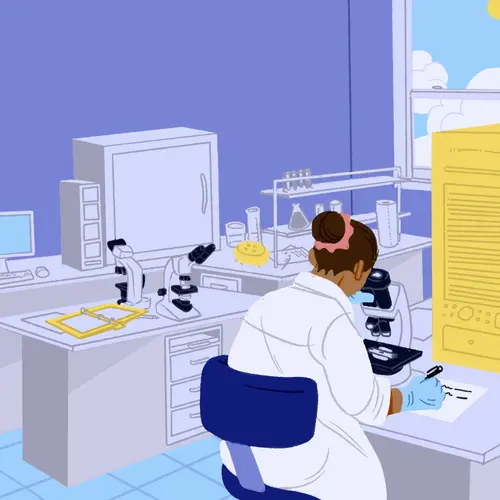If you have multiple myeloma, there’s a good chance it will come back after successful treatment. When this happens, it’s called recurrent or relapsed. If it doesn’t respond to treatment or comes back within 60 days after your last therapy, it’s known as refractory.
You’ll probably have a lot of questions and concerns. It’s important to know that treatment options are available, even if your cancer returns.
And while you can’t completely avoid a relapse, you may be able to spot certain signs and symptoms earlier, which could lead to better care.
Why Does a Relapse Happen?
Multiple myeloma is cancer that grows in your plasma cells -- special white blood cells that make antibodies (special proteins) to fight infection.
Treatment kills most of the myeloma cells in your body, but a few can still survive. Doctors call the small number of cells that stick around after treatment minimal residual disease (MRD). These cells may eventually grow and divide, which leads to a relapse.
Doctors can look for changes in your MRD over time to predict how long your treatment will work. Two techniques are currently used to measure MRD- Genetic Sequence Analysis: Next Generation Sequencing (NGS) and Flow cytometry: Next Generation Flow (NGF). Only NGS is an FDA-approved test, and researchers are still learning how to best use these tests.
What Are My Chances of Relapse?
Because this condition is rarely curable, nearly all people who have it and live through treatment will have a relapse at some point.
It can come back in the same place it started or in other areas of your body.
Most people who have it go through cycles of remission (when doctors can’t spot signs of it on tests) and relapse. Your doctor can help you understand what type you have.
Types of Relapse
There are two types of multiple myeloma relapses, and doctors handle them differently:
- Indolent or low risk: This happens more slowly, often over years. Your doctor might try a treatment you’ve already had.
- Aggressive or high risk: This one comes up quickly, within weeks or months. Your doctor may suggest a new therapy.
How Will I Know I’ve Relapsed?
Your doctor will order tests to check the status of your cancer while you’re in remission. They might include:
- Physical exam
- Blood or urine test
- Computed tomography (CT) scan
- Magnetic resonance imaging (MRI)
- Bone scan
- Bone marrow biopsy
Abnormal results could mean that the condition has returned.
Also, when your disease comes back, the same problems you had when you were first diagnosed might crop up again. Or you might have new problems. Some common symptoms are:
- Bone pain
- Bone breaks
- Fever
- Fatigue
- Weight loss
- Easy bruising
- Trouble breathing
- Weakness in the arms or legs
What to Do After Relapse: Treatment Options
There are lots of options if you have a relapse. The most common include:
Chemotherapy. This medication kills cancer cells in your body. If your multiple myeloma comes back, you might get a higher dose or a different course of drugs, such as:
- Cyclophosphamide (Cytoxan, Neosar)
- Doxorubicin (Adriamycin, Rubex)
- Melphalan (Alkeran)
- Melphalan flufenamide (Pepaxto)
- Vincristine (Oncovin, Vincasar, Vincrex)
Your doctor may also try high-dose steroids alone.
Stem cell transplant. The high doses of chemo or radiation used to treat a multiple myeloma relapse can kill the stem cells in your bone marrow. To protect them, your doctor removes stem cells, usually from your hip. They’ll use a big needle to pull out the liquid marrow while you’re asleep. The cells are frozen and returned to your body by a vein after your treatment.
Targeted therapies. These medications target specific parts of cells that help cancer cells grow, divide, or spread. The following drugs can be given alone or as part of a 3-drug combination treatment for recurrent multiple myeloma include:
- Monoclonal antibodies (daratumumab, elotuzumab, isatuximab)
- Proteasome inhibitors (bortezomib, carfilzomib, ixazomib),
- Iimmunomodulatory drugs (lenalidomide, pomalidomide, thalidomide)
- Alkylators
- Anthracyclines
- Panobinostat (Farydak)
- Selinexor (Xpovio)
- Corticosteroids
About one-fourth of people with relapsed multiple myeloma will go into remission after several cycles of chemo. Those who get targeted therapies or high-dose chemo followed by a stem cell transplant usually have better outcomes.
Clinical trial. You might want to consider this if your cancer comes back. These studies give you the chance to try new treatments that aren’t otherwise available.
Supportive care. Your doctor may also offer this to ease your symptoms or manage complications.
Talk to Your Doctor
If you have a relapse, you and your doctor will work together to come up with the best treatment strategy.
You might have a lot of questions. Here are some to ask:
- What treatment approach do you recommend?
- Why do you think I should have this treatment?
- What are my other options?
- How will the treatment affect my daily life?
- What are the chances that my cancer will come back?
- How long do you think this treatment will work?
- What will we do if the cancer comes back after this treatment?
- Are there any clinical trials I should consider?
Can I Prevent a Relapse?
You can’t prevent a relapse entirely. But you should stay on top of your health and see your doctor often to have follow-up tests. Let them know if you have any unusual symptoms.
While you’re in remission, your doctor may give you a low dose of a maintenance therapy drug, such as a steroid or targeted medicine, for an extended period of time. This could keep you in remission longer and ward off a relapse.
Although there’s no cure for multiple myeloma, it’s important to know that you can live with it for some time. New treatment options are also in development that may offer a better outlook in the future.

